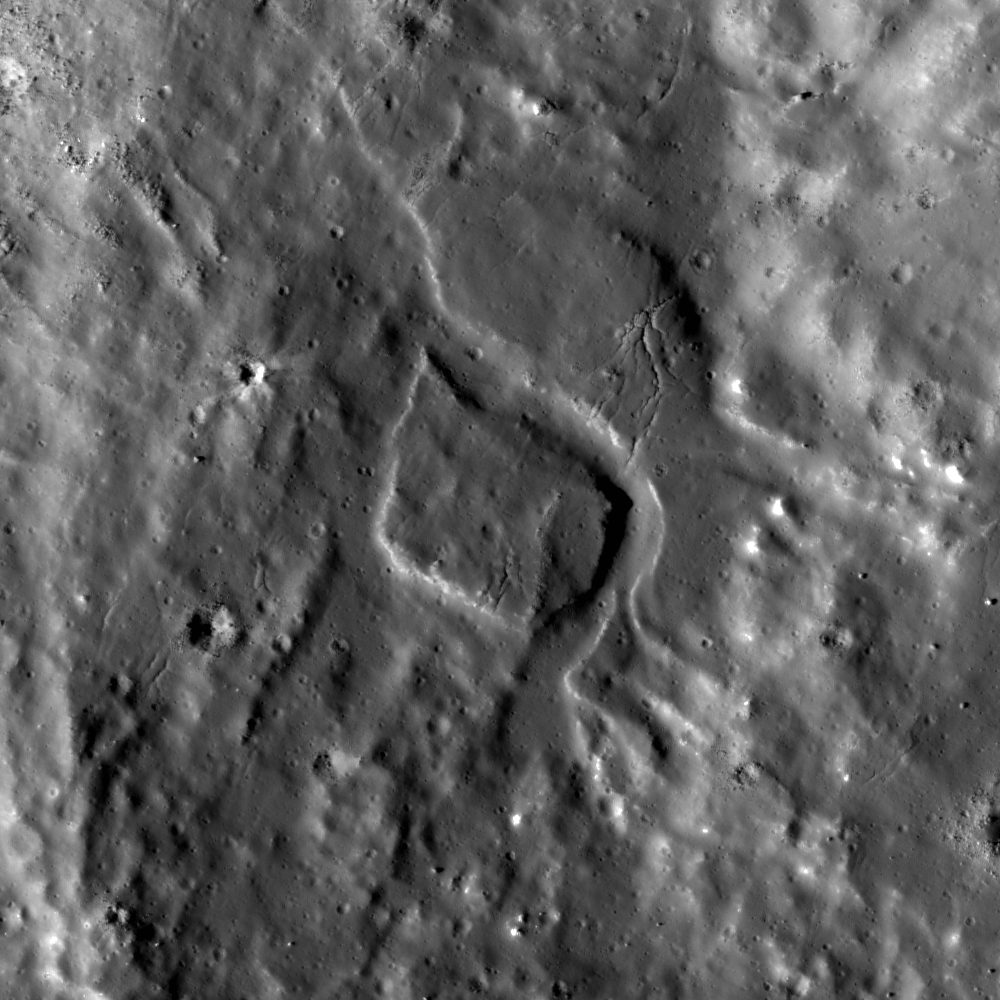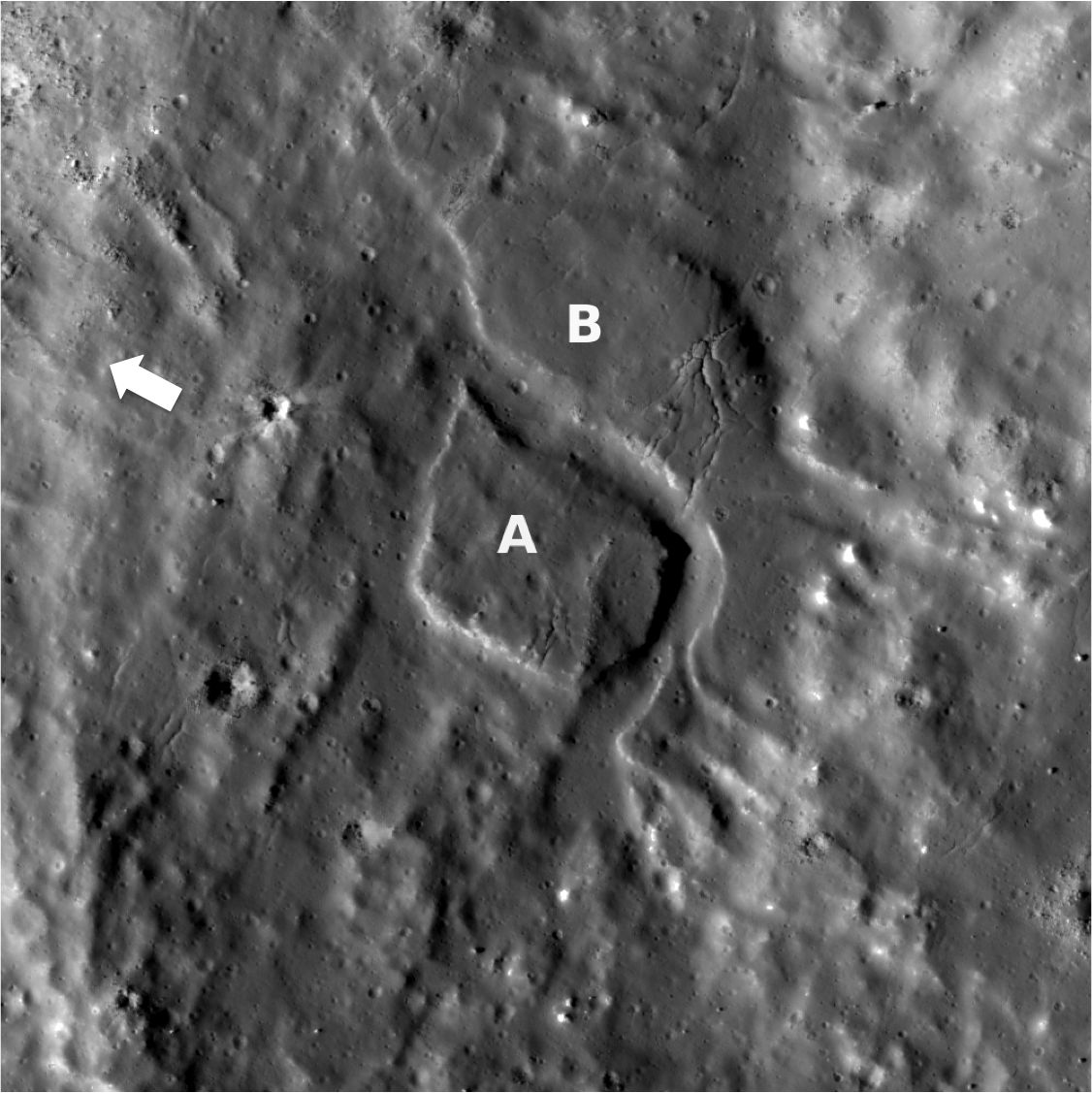
Although impact melt on the Moon was first observed in Apollo era images, the high-resolution LROC NAC images allow geologists to look at impact melt deposits in much more detail. Now we know that impact melt creates many young, spectacular features on the lunar surface: diverging flows, melt ponds, polygonal fractures, leveed flows, and fragmented blocks.
Flowing impact melt may act erosively, removing rock from one location and depositing it in another. This Featured Image shows a section of rock on a terrace in the eastern wall of Jackson crater. The section "A" appears to be severed from the rest of the rock by a small channel. It is probable that fast-moving impact melt created this small channel (on average ~60 meters wide). As the impact melt flowed over the terraces, toward the center of the crater, it gathered enough momentum to flow turbulently and cut through the pre-existing rock. The pointed ends of the isolated section also hint at being eroded by a flow. The pre-existing rock appears to be impact melt as well (deposited by a previous flow), or is covered with a thin layer of impact melt. Usually we only see channels carved through rock in the case of sinuous rilles, which are caused by turbulent flow of basalt.
Browse the entire NAC for more interesting views of Jackson crater!
Related Images:
Published by Sarah Braden on 10 August 2011

